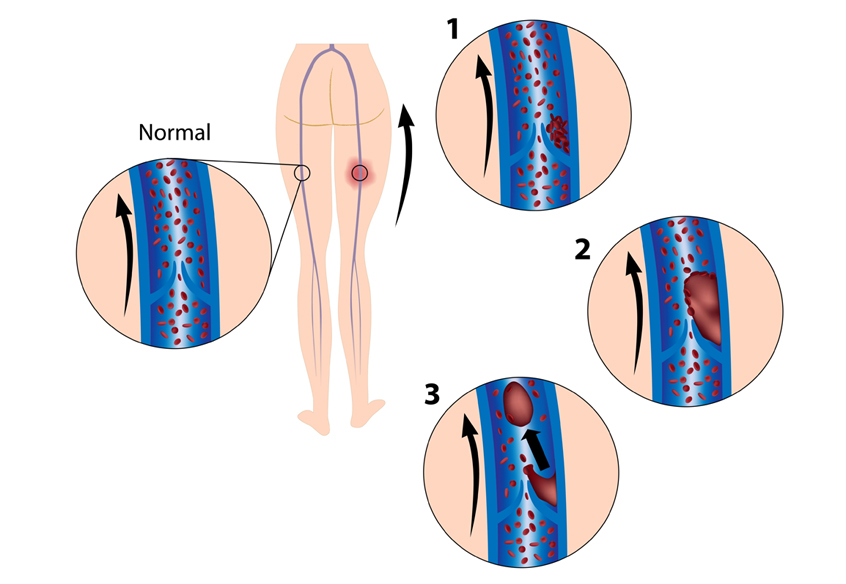Thrombotic Risk DNA Panel (F5, F2, MTHFR)
Find out if you are at increased risk of thrombosis
- Thrombophilia is a condition where the blood has an increased tendency to form clots
- Every year, more people die from a blood clotting problem than breast cancer and AIDS combined
- Thrombophilia can lead to complications during pregnancy
- If you are overweight, inactive or a smoker you are at an even higher risk
- Simple mouth swab DNA test with results in 1 – 2 weeks

What is the Thrombotic Risk DNA Panel?

The genes most commonly associated with thrombosis are Factor V (F5), Factor II prothrombin (F2) and MTHFR. Mutations found in each of these three genes cause abnormal blood clotting. The thrombotic risk DNA panel includes the analysis of mutations in all three genes:
- F5 — F5 encodes the Factor V protein that promotes blood clotting. The 1691G>A mutation in the F5 gene (known as Factor V Leiden) results in an excess of the Factor V protein and abnormal blood clotting can occur. This is the most common mutation linked to thrombophilia.
- F2 — F2 encodes the prothrombin protein that promotes blood clotting. The 20210G>A mutation in the F2 gene results in an excess of the F2 prothrombin protein and abnormal blood clotting can occur.
- MTHFR — MTHFR encodes the methylenetetrahydrofolate reductase enzyme that helps process Vitamin B9. The 677C>T and 1298A>C mutations in the MTHFR gene each lead to a buildup of homocysteine that contributes to abnormal bleeding.
Step-by-Step
The kit can be ordered online, by fax or mail, or by phone. Once you place the order, the testing kit will be shipped directly to you. The kit contains swabs called “buccal swabs”. DNA is collected quickly and easily by rubbing the swabs inside your mouth against the cheek for 30 seconds. Once the DNA is collected, the swabs are placed into the specimen container provided in the kit and returned to the laboratory for testing using the return package included in the testing kit. Once your samples arrive at the laboratory, testing begins immediately and results are available in 1 to 2 weeks.
Symptoms of Thrombosis (Blood Clot)
Deep Vein Thrombosis (DVT)
A blood clot in a vein is the most common problem with thrombophilia. Deep Vein Thrombosis occurs when a blood clot forms in one of the deep veins of your body, usually your legs but sometimes in your arm. The signs and symptoms of DVT include:
Pulmonary Embolism
Pulmonary embolism occurs when a clot that has formed in a vein breaks off and travels to the lungs. This condition can be fatal. The signs and symptoms of a pulmonary embolism include:
- Unexplained sudden shortness of breath
- Chest pain or discomfort which worsens when you take a deep breath or cough
- Lightheaded, dizziness, fainting
- Rapid heart rate
Frequently Asked Questions
Get Started
Thrombophilia Learning Center
What is the treatment for Thrombophilia?
The treatment for thrombophilia depends on the type of thrombophilia and the risk of forming blood clots. The objective of the treatment is to alleviate symptoms and prevent further blood clots from developing. There are [...]
Who should be considered for Thrombophilia diagnosis and how is it done?
People with inherited or acquired thrombophilia are normally asymptomatic until blood clots forms. Therefore, if there is any family history, personal medical history, or pregnancy problems suggestive of thrombophilia, these people should be considered for [...]
How to decrease the risk of deep vein Thrombosis for people with Thrombophilia?
People with thrombophilia have a higher tendency to form blood clots, hence they should adapt a healthy lifestyle by eating a balanced diet and regular exercise. Certain lifestyles and situations should be avoided in order [...]






